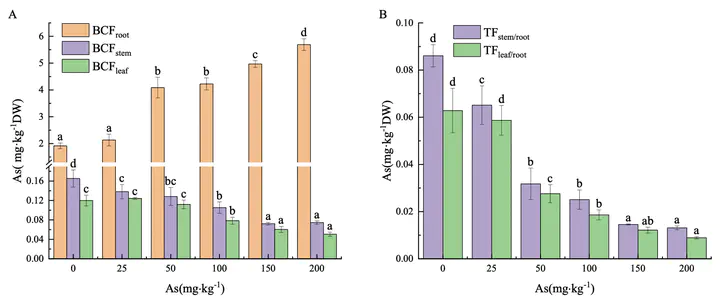5. Phytoextraction and Antioxidant Defense of Mangrove Seedling (Kandelia obovata) to Inorganic Arsenate Exposure

Abstract
Increasing arsenic (As) pollution is posing potential endangerment to mangrove wetland ecosystems. Mangrove phytoextraction, translocation, and responses to As exposure must be urgently addressed. In this study, the growth and physiological response of Kandelia obovata seedlings were examined after addition of 25−200 mg kg−1 As under sediment culture conditions. Results showed that the seedling morphological variations were not significant below 100 mg kg−1 compared to the control group, indicating superoxide dismutase, peroxidase, and catalase synergetic interaction to resist the As exposure. High As concentrations (150–200 mg kg−1) inhibited the seedling growth accompanied by a significant increase in malondialdehyde content and decrease in activities of antioxidant enzymes. Toxicity symptoms and mortality appeared in 200 mg kg−1 As, presumably because the plant reached the limit of As tolerance. Besides, As accumulated mainly in roots, accounting for 87.04–97.85% of the total As, and the bioaccumulation factor (BCF) was >100%. However, the BCF and translocation factor (TF) in stems and leaves were below unity, illustrating a weak capacity of transferring As to aerial parts of the seedlings. Overall, K. obovata is a potential remediated species in polluted coastal wetlands due to high phytoextraction capacity and high tolerance to As exposure.